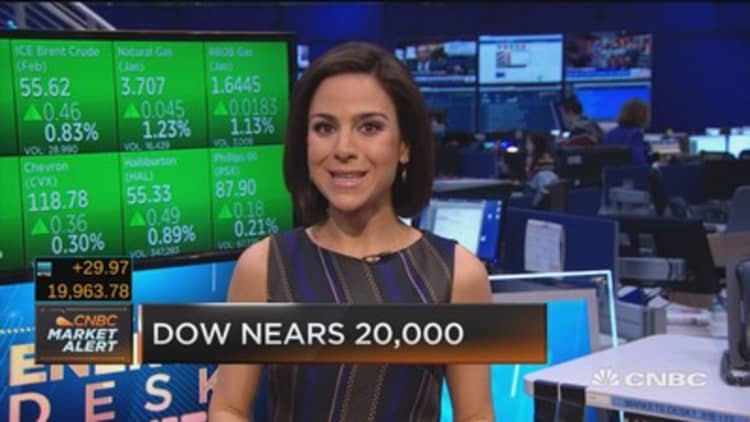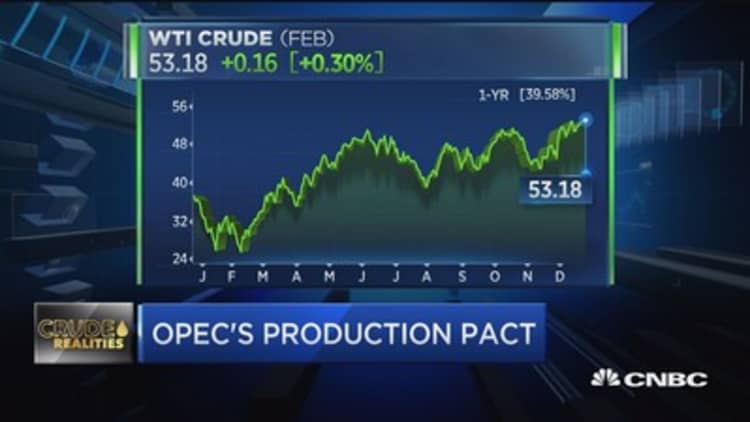
Oil jumped 1.7 percent Tuesday, continuing its year-end rally with support from expectations of tighter supply once the first output cut deal between OPEC and non-OPEC producers in 15 years takes effect on Sunday.
U.S. crude prices have surged 25 percent since mid-November, helped by expectations for OPEC's supply cut and generally solid U.S. economic figures that have also bolstered equity prices.
Trading was thin on Tuesday, with less than one-third of the usual volume in futures contracts in West Texas Intermediate crude oil. With oil near $54 a barrel, U.S. crude futures are not far from the year's high of $54.51 high reached on December 12.
"Some of the doubts (in OPEC) people are showing are going to have to be put to rest," said Phil Flynn, analyst at Price Futures Group in Chicago. "There's a strong possibility that we're going to rally into the end of the year."
Jan. 1 brings the official start of the deal agreed by the Organization of Petroleum Exporting Countries and several non-OPEC producers to lower production by almost 1.8 million barrels per day (bpd).

Brent crude was up 87 cents, or 1.6 percent, at $56.03 a barrel by 2:35 p.m. ET (1935). The global benchmark reached $57.89 on Dec. 12, the highest since July 2015.
U.S. West Texas Intermediate crude settled up 88 cents, or 1.7 percent, to $53.90.
Crude may struggle to rally much further before evidence is available of OPEC's compliance with the cuts, analysts said.
"To go above $60 is going to be difficult. We're already close to the top rather than the bottom of the range right now," said Olivier Jakob, oil analyst at Petromatrix.
"From January, we'll start to have a better idea about the level of OPEC production. That is going to be more and more of a focus."
The first meeting of a committee of OPEC and non-OPEC nations responsible for monitoring compliance with a global agreement to reduce oil output has been proposed for Abu Dhabi on Jan. 13, two sources told Reuters on Tuesday.
The commission includes 5 members: Kuwait, Algeria, Venezuela, Russia and Oman.
Russian oil producer Gazprom Neft said on Tuesday it planned to increase oil production by 4.5-5 percent next year, less than it had intended before Russia joined the supply cut deal.

Major OPEC members such as Saudi Arabia and Iraq have informed customers of lower supplies. But Libya and Nigeria — which are exempt from reductions because conflict has curbed their output — have been increasing production.
Libyan output was 622,000 bpd on Monday, up slightly from levels recorded before an armed faction agreed to lift a two-year blockade on major western pipelines on Dec. 14, the National Oil Corporation (NOC) said.
While the outright price of crude is being supported by the prospect of lower supplies, the impact in the physical market will probably differ according to the type of crude.
Price differentials for lighter crudes could weaken once the supply cut comes into force as producers are expected to trim back output of their heavier grades, analysts at JBC Energy said in a report.
"Going into 2017, we expect that the premiums for light, sweet grades may be increasingly pressured as a result of the joint OPEC and non-OPEC output cut agreement which is supposed to reduce primarily the availability of medium-sour crudes," JBC said.

